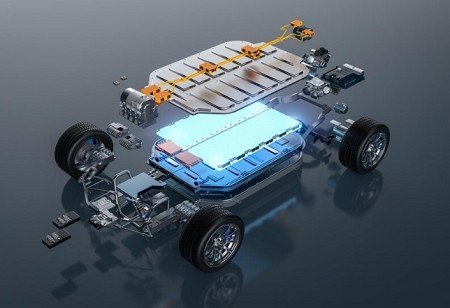
The world economy is headed into a critical point as a devastating Rare Earth crisis becomes a reality, a supply chain bottleneck with far-reaching consequences for electric vehicles (EVs), electronics, and renewable energy infrastructure. Such minerals, important in the operations of high-tech and green-tech products, are experiencing rising geopolitical hurdles, soaring demand, and sluggish diversification efforts. This has led to the fact that nations and businesses are now being pushed to redesign their supply chain policies, the industry program, and the innovation pipelines.
In this article we will take a closer look at the evolving Rare Earth crisis and the implications it has on the EV industry, the electronics industry raw material crisis, and overall issues with supply chain security and clean energy transitions.
Rare earth elements like neodymium, dysprosium, and terbium may represent a small portion of materials by volume, but their role in enabling modern technologies is outsized. These materials are critical in terms of high-strength permanent magnets, semiconductors, and energy-saving components. China now supplies more than 90 percent of all rare earth magnets to the world including the US, Europe, India, and Japan. And thus the entire world is actually vulnerable to strategic supply risk.
The crisis has been worsening since China has put export restrictions on gallium and germanium in 2023 and stricter export controls on other key minerals in 2024. As requirements of rare earth minerals in the manufacture of electric cars and clean technologies soars to the skies, this demand and supply disparity is rapidly turning into a choke point.
The rare earth impact on EVs is immediate and far-reaching. EVs are dependent on high powered electric motors that are made up of permanent magnets composed primarily of neodymium and dysprosium. These EV motor magnets provide peak efficiency, torque, and power density, which is critical to consumer adoption and range.
Automakers over the past few years have attempted to pursue disparate strategies: Tesla is working to minimize its exposure to rare earths, is experimenting with induction motors, and Toyota is betting big on hybrid EVs that will continue to face neodymium demand. In both instances a steady and affordable source of rare-earths continues to be critical.
The electronics industry raw material crisis is no less severe. Rare earths are essential in the miniaturized, high-precision components required in the use of smartphone technology, laptops, wind turbines, drones, and defense systems. With the cost of neodymium and praseodymium increasing, by more than 50 percent since the beginning of the year 2024, manufacturers have no choice but to reconsider every existing design approach, part supplier and their assembly.
"As countries like India and the US rapidly build domestic processing capacities, serious concerns are emerging about environmental impact, economic sustainability, and geopolitical power dynamics."
The battery mineral supply chain, which includes lithium, cobalt, and nickel, has already drawn headlines due to resource nationalism and environmental concerns. Rare earths now bring another complexity. Although they do not normally feature as components of batteries, they are a key component of EV motors and wind turbine generators, so they are a necessary component of the clean energy transition.
This tech industry resource crunch mirrors similar vulnerabilities once seen in the oil market. Except now, the battleground is not oil rigs but rare earth mines and magnet factories. As countries like India and the US rapidly build domestic processing capacities, serious concerns are emerging about environmental impact, economic sustainability, and geopolitical power dynamics.
In the meantime, the renewable energy components market, more precisely, wind turbines and grid storage systems, is covered as well. The offshore wind turbines rely on dysprosium and terbium to power permanent magnet generators. A constrained supply risks delaying projects and increasing costs, undermining clean energy targets set by the IEA and national governments.
Industry experts have been increasingly vocal about the risks. Fatih Birol, Executive Director of the International Energy Agency (IEA), warned:
“The world’s ambitions for a clean energy future hinge on the availability of critical minerals, and rare earths are at the center of that challenge.”
Ryan Castilloux, Managing Director of rare earth analytics firm Adamas Intelligence, noted:
“Neodymium demand is outpacing supply due to the surge in EV and wind turbine production. Unless new projects come online quickly, we’re heading toward a severe supply bottleneck.”
Even Elon Musk has acknowledged the need to transition away from traditional rare earth dependence, stating:
“Rare earth elements are not rare in abundance, but they are rarely mined in an environmentally sound way. We’re actively working on reducing our reliance on Tesla motors.”
Bajaj Auto’s Executive Director Rakesh Sharma flagged a potential crisis, saying, “I must point out a dark cloud on the horizon in terms of the continued supply of rare earth magnets from China, which are essential components of high-performance EV motors.”
As the Rare Earth crisis deepens, major economies are taking action. The United States has activated the Defense Production Act for critical minerals, the European Union has passed the Critical Raw Materials Act, and India is exploring partnerships in Australia, Africa, and Latin America to secure long-term access.
For the EV and electronics industries, the way forward includes increased recycling of magnet materials, development of rare-earth-free technologies, reshoring of magnet manufacturing, and deepened international cooperation. However, most of these are medium- to long-term solutions. In the near term, pricing volatility, project delays, and margin pressures are inevitable.
The convergence of rare earth scarcity, growing neodymium demand, and a fragmented battery mineral supply chain means companies will need to be smarter about resource sourcing and more transparent about lifecycle emissions. In the race for net-zero, material independence may prove as crucial as technological innovation.
We use cookies to ensure you get the best experience on our website. Read more...